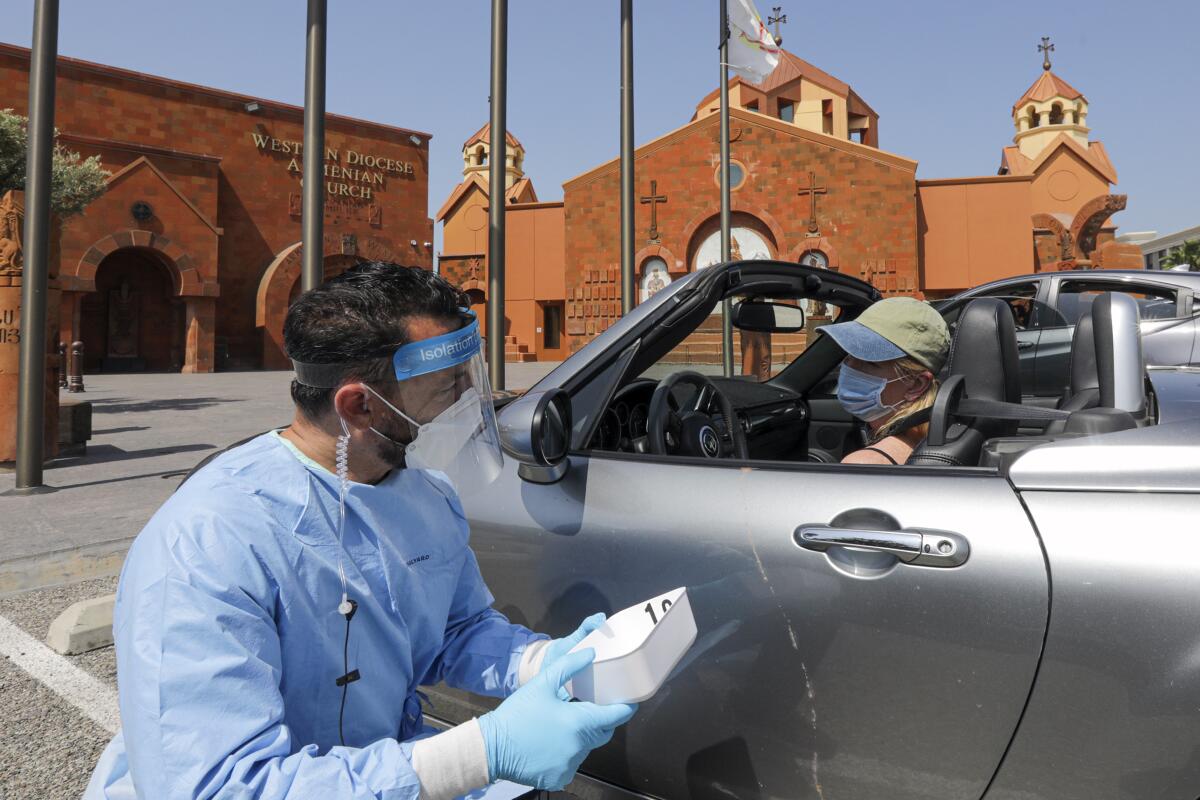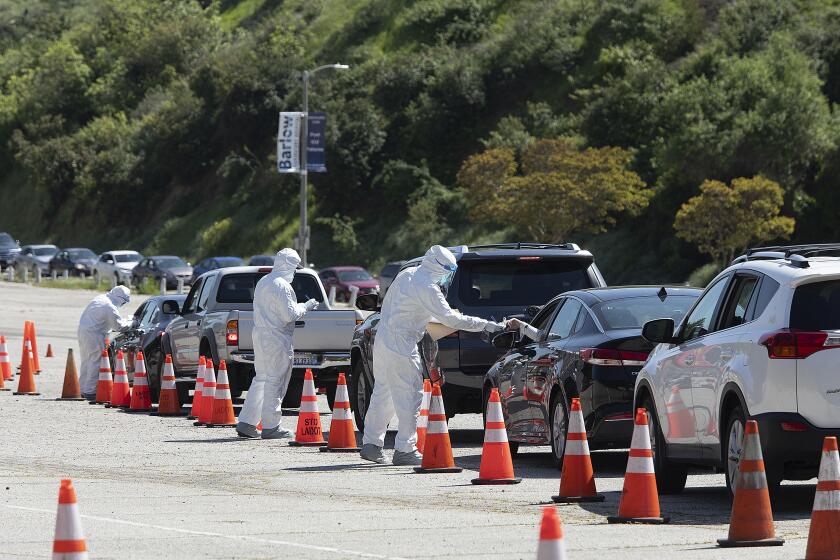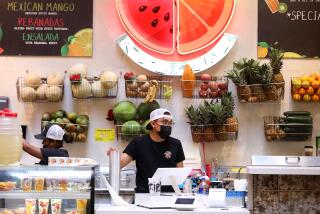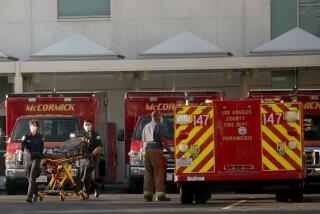Op-Ed: You shouldn’t need a car to get tested for COVID-19

- Share via
Public health officials concur that testing is one — if not the most — crucial factor in combating the spread of the coronavirus and COVID-19. Without it, there’s no clear-cut information on where and how fast the disease is spreading nor how best to safely reopen the economy. And free access to testing is an essential feature of testing programs.
In April, Los Angeles became the first U.S. city to roll out free testing to all residents regardless of whether they exhibited symptoms. But like many other aspects of L.A. life, our testing system has been structured around cars.
Almost two-thirds of our testing sites are drive-through locations that provide quick, convenient and socially distanced testing. Although 42 of the 105 testing sites, by our estimate as of June 25, are in walk-up locations, many Angelenos without cars don’t live close enough to walk there.
Cost is not a barrier to testing, but our analysis suggests that location of the testing sites is.
L.A. County has made free testing available to anyone who wants it, symptoms or not. Is that good public policy?
For each walk-up site, we looked at how many people live within a mile radius and could conceivably walk to the site. You don’t need to look at a map to know that too many people and places are left behind. If you don’t have a car but live in South Los Angeles, chances are you can find a nearby walk-up test site. But if you’re carless in East L.A., there is not a single walk-up option in your community. The entire San Fernando Valley — with a population of almost 2 million — received its first and only walk-up site, in Arleta, in late June.
Currently, the options for many of those who need testing are not ideal. They can borrow a friend‘s or family member’s car or take an Uber or Lyft to a drive-through site. Or they can take public transit to one of the more distant walk-up sites. But these options come with a significant cost — increased risk of exposure.
Innovations in mobile testing could provide future relief. For example, Los Angeles is rapidly deploying mobile teams to train testers at residential care facilities, and Riverside County is using the teams to serve hard-to-reach and remote communities.
If you live in a household without a car in Los Angeles County, you are much more likely to be poor, 65 or older, Black, a recent immigrant, living with a disability or uninsured. These same households also face higher risks of contracting COVID-19, so making sure they have access to testing is paramount.
Limited access to services outside of the densest parts of our region is not unique to COVID-19 testing. Being carless while living in Panorama City or San Pedro makes it hard to get around. It limits access to grocery stores or healthcare providers. In outlying neighborhoods, public-transit service is infrequent and it can take a long time for someone to get where they need to go. By and large, the suburbanization of poverty means that families who need the most assistance often live in places where it is difficult to access services without a car.
In fairness, this problem is not unique to Los Angeles. Houston and Miami each have six walk-up sites. Fulton County, where Atlanta is, has a single free walk-up site.
As of now, only 9% of L.A. County’s population lives within a mile or a 20-minute walk from a walk-up site. But if the county made all of its 105 existing sites available for walk-up testing, then 1.8 million people — more than double the current number — would live within one mile of a testing site.
Given the need for frequent and widespread testing, 19% is still not enough.
The current crisis requires us to think creatively about how to improve access to testing sites. For example, what if walk-up testing sites could be set up at public libraries, which are evenly distributed throughout L.A. neighborhoods?
If every public library in Los Angeles County offered walk-up testing, 45% of county residents would have access to testing within a mile of their home. That figure rises to 52% if all current sites offered walk-up testing.
Libraries are one of the most equitably distributed public amenities. Since they are mostly closed right now because of coronavirus stay-at-home restrictions, perhaps we could enlist these public places — and schools and community centers — in the fight against COVID-19. Just as empty parking lots can easily be converted to testing sites with the help of cones and tents, distance markers and curtained partitions could do the same for libraries.
People living in households without cars in Los Angeles face a real challenge in getting to a free testing site. As the number of positive COVID-19 cases in Los Angeles and California continue to increase, more testing will need to be done. In Los Angeles and cities around the country, the ability to get tested should not depend on access to an automobile.
Evelyn Blumenberg is professor of urban planning and director of the UCLA Lewis Center for Regional Policies Studies. Madeline Brozen is deputy director of the center.
More to Read
A cure for the common opinion
Get thought-provoking perspectives with our weekly newsletter.
You may occasionally receive promotional content from the Los Angeles Times.









